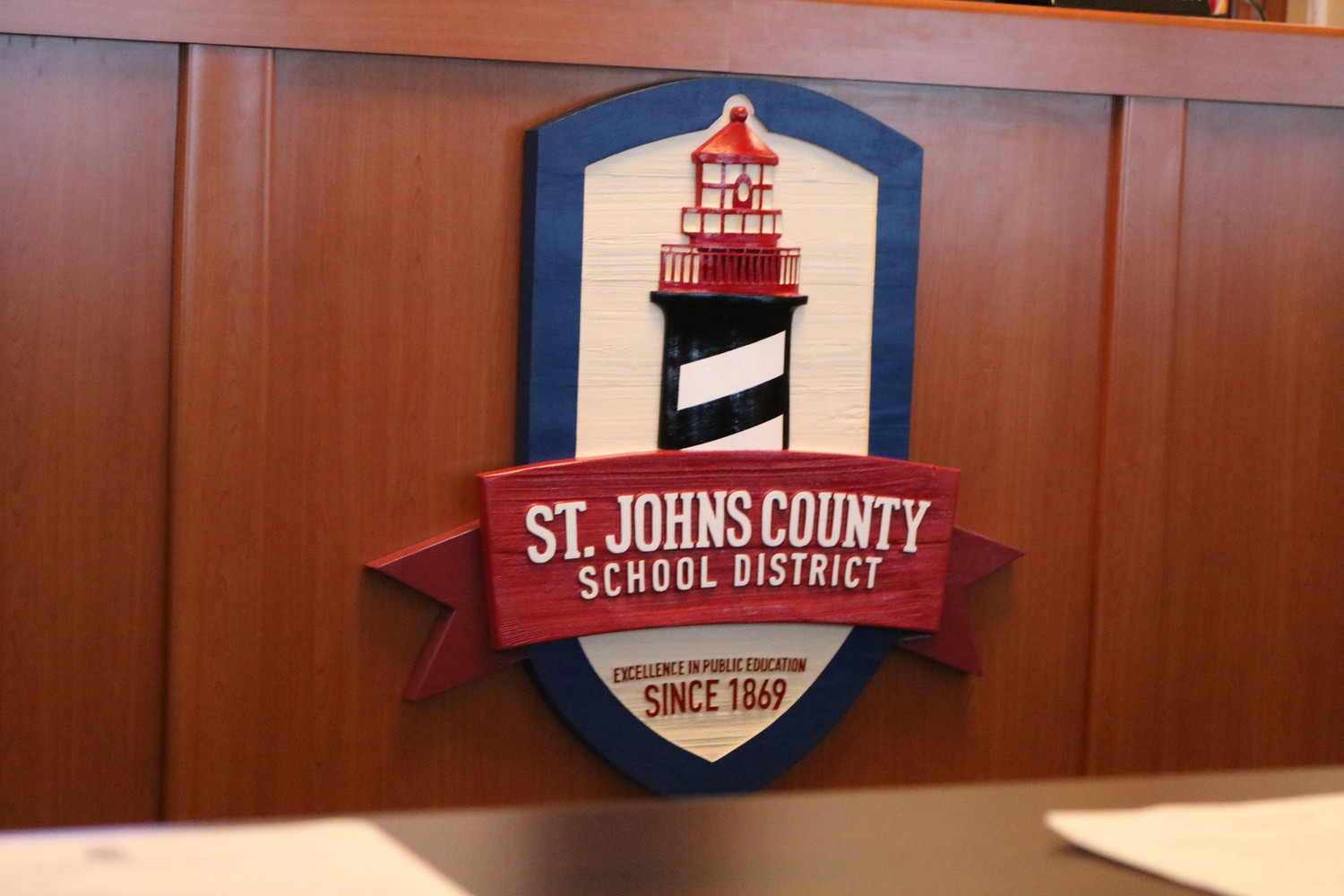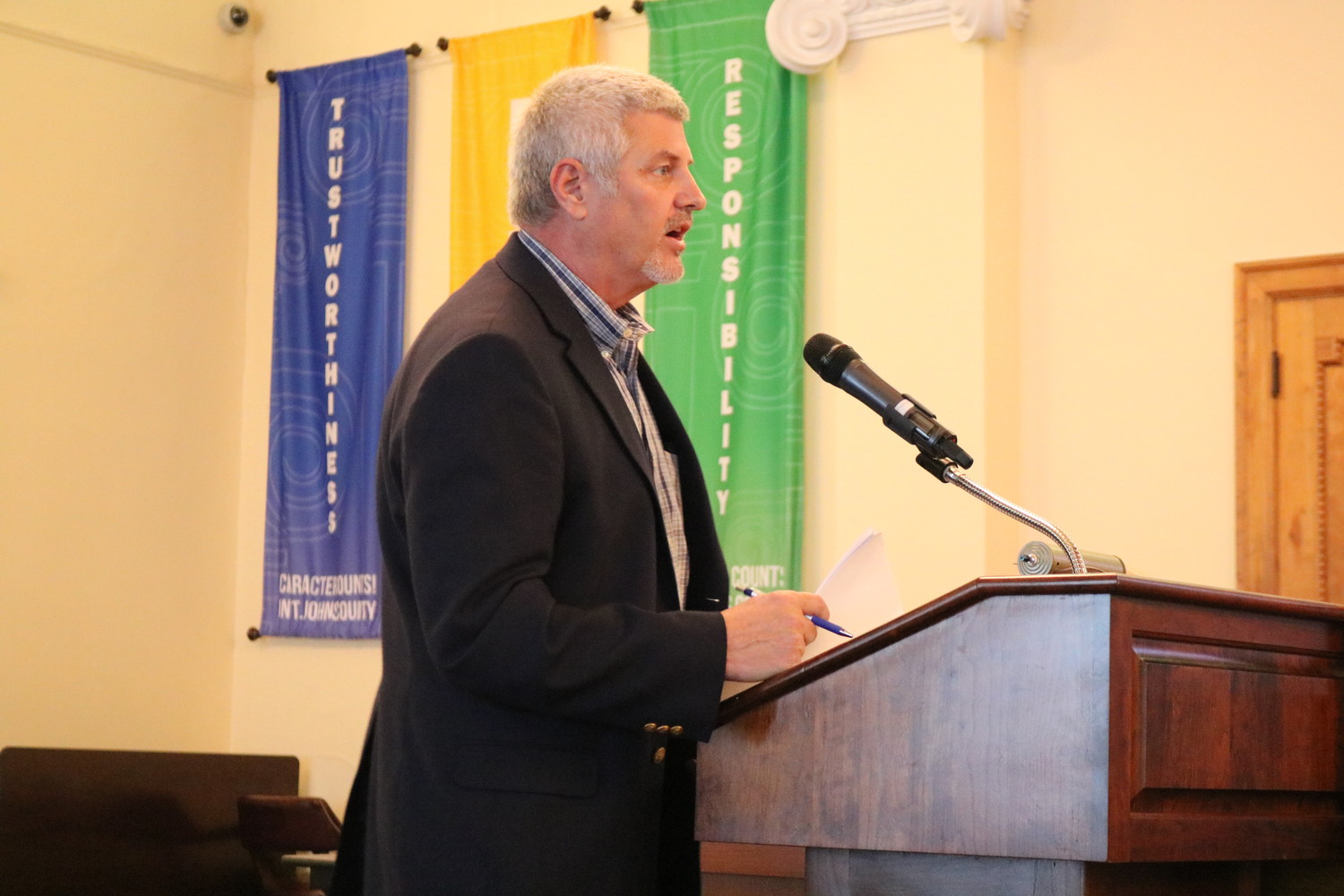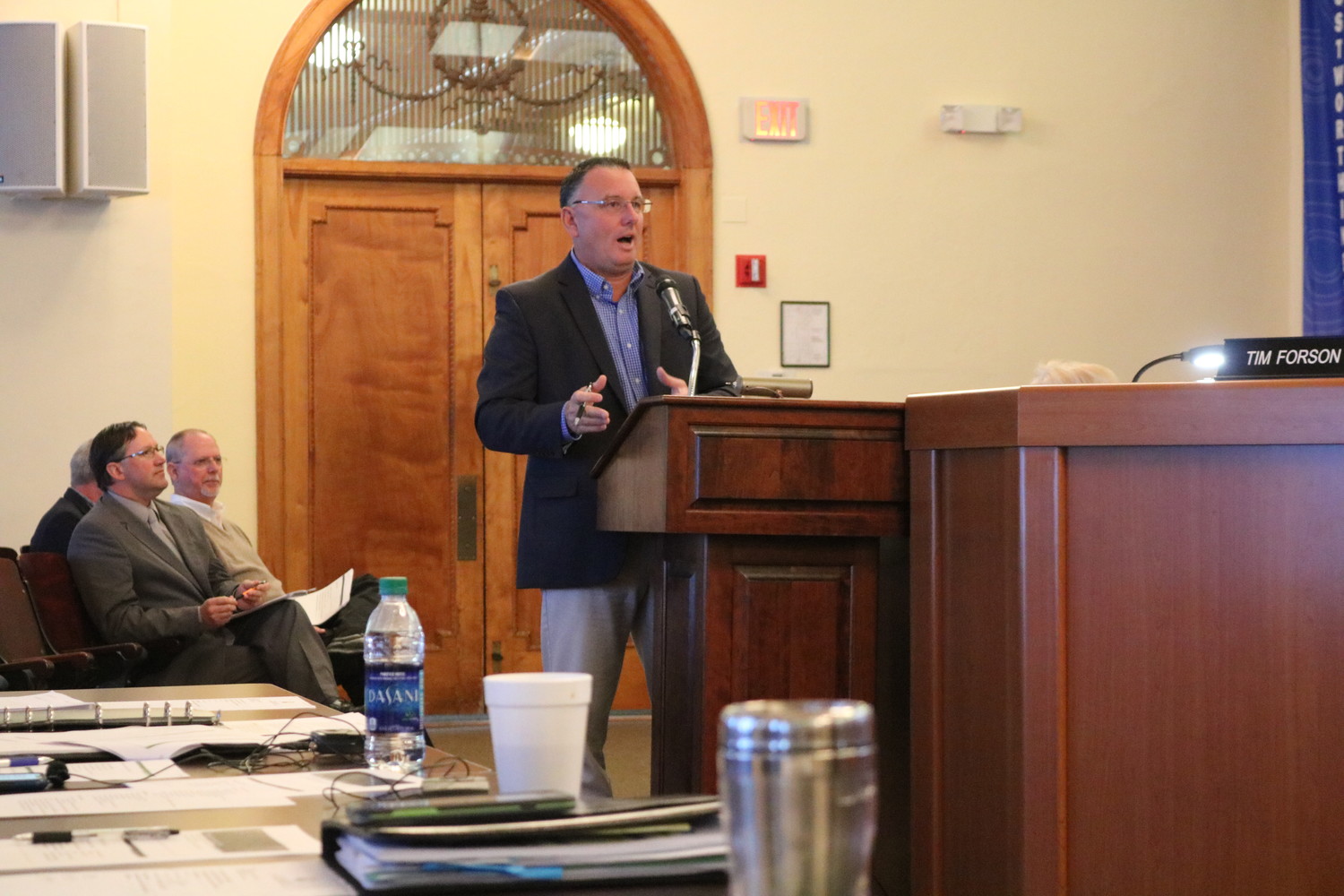‘If they don’t feel safe, nothing else matters’
SJCSD officials address efforts to prioritize safety following Parkland shooting
This article is the beginning of a series on St. Johns County’s response to the recent shooting that took place at Marjory Stoneman Douglas High School in Parkland. Pick up next week’s Recorder to read about a local nonprofit’s efforts to address cyber and social media safety in the community.
More than two weeks after a gunman killed 17 people at Marjory Stoneman Douglas High School in Parkland, St. Johns County School District (SJCSD) officials say steps are being taken locally to maximize school safety and security.
“For the last week or two, we’ve put other things that are important aside because safety is the absolute priority,” said SJCSD Superintendent Tim Forson at a school board workshop held Tuesday, Feb. 27. “As we heard from students yesterday, if they don’t feel safe, nothing else matters.”
Along with Forson, representatives from school services, facilities and safety attended the workshop and presented to the school board and public about the district’s plans to protect area schools. Forson also presented input from students that was provided at the Superintendent’s Student Advisory Council meeting on Monday, Feb. 26.
As for what is to come, Paul Rose, executive director for facilities and new construction, shared that $5 million from the school board’s half-cent sales tax revenue is being dedicated to safety and security improvements over the next 10 years. Over $1 million, he said, is earmarked for the 2017-2018 school year for enhancements to monitoring systems at seven schools; security door systems at seven schools; single door entry at 14 schools; security cameras at 24 schools; fencing at nine schools; and GPS technology on all school buses. Cathy Mittelstadt, deputy superintendent of operations, added that the district is paying particular attention to the county’s older facilities. The district is hoping to allocate more funds to safety provided that Gov. Rick Scott’s plans come to fruition. He announced last week that he wants the state to allocate $450 million for school safety, as well as $50 million for mental health initiatives.
Paul Abbatinozzi, senior director for school services, explained that plans were already established prior to Parkland to provide the district’s principals, assistant principals, faculty, staff and students with active shooter response training. He noted that the district’s principals completed that training with the St. Johns County Sheriff’s Office (SJSO) on Feb. 1, as did assistant principals on Feb. 8. Faculty and staff are starting to receive the training, he said, and district officials are currently designing programs for students ranging in age from high school to elementary school.
“We’re really going to work hard on what that delivery looks like for a 7-year-old versus what that looks like for a 17-year-old,” Abbatinozzi said.
He also noted that an active shooter response training for local law enforcement is scheduled for March 29 at Creekside High School. The district has coordinated with SJSO to allow administrators and school board members to observe the training or participate themselves.
Safety measures already in place
Also at the workshop, district officials shared several of the measures that are already in place to keep schools safe.
Abbatinozzi explained that each school completes an annual emergency operations plan that identifies roles and responsibilities for the school and includes guidelines for managing crisis situations, as well as contact information for key district, law enforcement and agency officials. A copy of this plan, he said, is provided to law enforcement.
In addition, the school services director noted that leadership and support is provided from the district level in crisis situations so that schools are not left on an "island." He said the district crisis management team has direct contact with law enforcement and first responders during crisis incidents, and assists with staff and student counts, off-site evacuation, provision support, counseling support and media/information coordination.
District Safety Coordinator Steve Ray spoke about safety teams, noting that each school has one that is comprised of principals, assistant principals, youth resource deputies, athletic directors, deans, guidance counselors, nurses and more. Each team, Ray said, meets at least four times a year and focuses on strategies to reduce risk and hazards. He noted that he receives an audit at the end of each year that reviews the takeaways from those meetings.
Ray also addressed CPTED, or Crime Prevention Through Environmental Design. He said he conducts CPTED inspections with SJSO at 18 schools per year, identifying potential hazards around the perimeter of the school buildings, such as issues with fencing, lighting, visibility, signage, etc.
On a similar subject, Rose said annual life cycle visits are conducted annually at each school to review the safety, security and functionality of fencing, entry control points, monitoring and camera systems, door access and controls, intercoms and radio and cell phone coverage. Rose noted that each high school in the district has over 100 cameras on their respective campuses. Youth resource deputies monitor these cameras, but Forson said later in the meeting that no one is hired to sit and monitor the cameras at all times.
After addressing the district’s various vehicles for communication, such as School Messenger, radios and email, Abbatinozzi discussed the district’s relationship with SJSO.
“Our partnership with the sheriff’s department separates us from other districts,” he said. “We have an incredible relationship with not just the sheriff’s department but all of our law enforcement agencies and first responders.”
Abbatinozzi also noted that SJCSD has a liaison from SJSO, Lt. Mike Strausbaugh, who works directly with the district.
Input from students
To close out the workshop’s safety discussion, Forson shared input that he received from local students at the Superintendent’s Student Advisory Council meeting on Monday, Feb. 26, which was also attended by City of St. Augustine Chief of Police Barry Fox, St. Augustine Beach Chief of Police Robert Hardwick and Lt. Strausbaugh.
Students broke into groups to answer the following question: What would remove the fear of not feeling safe in your school environment? Suggestions from the students included the addition of more mental health counselors and resource officers; an increase in the number of lockdown drills; required classes/curriculum that address safety; a culture of “see something, say something;” a reduction in the number of entries into a school; increased security at doors; and a requirement that student IDs be worn at all times, among other input.
After the discussion, the school board provided closing comments on the subject. District 4 member and board chair Kelly Barrera noted that there isn’t just one answer to this looming societal problem. District 5 member Patrick Canan said he believes it’s unlikely for someone to fall through the cracks in St. Johns County, as he said was likely the case with the Parkland shooter. He referred to the district as a “great organization” and cited the strength of the relationship between the schools and SJSO. Canan also said the district should not allow money to be an inhibiting factor in working to make schools safer.
“Money shouldn’t be what’s holding us back here,” said Canan. “The priority, as Mr. Forson said, is safety of the kids.”












